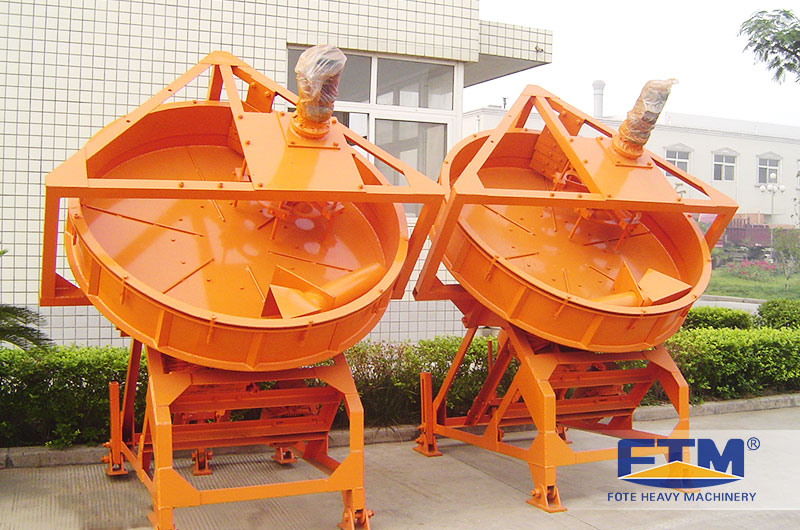 By Fote Machinery Editer
By Fote Machinery Editer
Clay, mudstone, slate, gangue, natural quartz sand, glass balls, and metal balls, coal ash, shale, sludge and industrial solid waste, etc. in building materials, gardening, infrastructure construction, water management, fireproof, insulation materials industry, chemical industry, and other departments.
Production Capacity: 70-5,000 t/d
Production Processes: Crushing, batching, grinding, balling, burning, making coal powder, cooling finished products, screening and packing.
Ceramsite production line is also called the ceramsite sand making line, light aggregate plant or LECA production line. This production line is mainly composed of belt conveyor, feeder, granulating machine, rotary kiln, cooling machine, ball mill, dust chamber, draught fan, and pulverized coal injection system. It uses clay, slate, shale, coal gangue and industrial solid waste as raw materials sinter into the ceramic product- ceramic sand.

Ceramsite Sand Making Line
As mentioned, the ceramsite sand making line is also called the LECA production line. Here LECA means Light Expanded Clay Aggregate. From this name, we can see it that ceramsite sand can be used in many fields. Ceramsite sand is the alternative material of low and medium strength proppant such as natural quartz sand, glass balls, and metal balls. It can be widely used in building materials, gardening, infrastructure construction, water management, fireproof, insulation materials industry, chemical industry, and other departments. Besides, it is mainly used as the underground support of the oil field to increase the yield of oil and gas.

According to different raw materials, ceramsite production line can be divided into shale ceramsite production line, coal ash ceramsite production line, sludge ceramsite production line, clay ceramsite production line and so on; according to different usages of ceramic sand, it can be divided into construction ceramsite production line and petroleum ceramsite production line.
Ceramsite production line process can be summarized as crushing→proportioning→grinding→ball making→calcination→pulverized coal preparation→finished product cooling→screening→packaging, etc.
>>Crushing
Mined bauxite, generally about 300~500mm, contains a small amount of water. The secondary crushing system composed of jaw crusher and hammer crusher is generally adopted. The particle size shall be controlled below 8mm. Bauxite, manganese powder, return material and other materials are then transported to stores respectively, under which the speed regulating belt scale is set to realize the automatic batching measurement of materials.

Jaw Crusher and Hammer Crusher
>>Milling
Generally speaking, the ball mill, which can be used for drying and grinding, is equipped with high efficiency powder separator to form a closed circuit system to improve the grinding efficiency. The hot air for drying material can come from the waste gas of rotary kiln to make use of waste heat, or a special hot blast stove can be set up.

Ball Mill
>>Ball-making
The raw material powder is sent into a small silo, under which a spiral metering device or a speed regulating belt weigher is set up to measure the amount of raw material. The raw material enters the disc granulator. At the same time, the Flowmeter can be used to measure the amount of water. The pipeline pump sprays water into the disc ball making machine. In the process of rotating the disc granulator, it can make a variety of particle sizes of the ball.

Disc Granulator
>>Calcinaton
The ball out from the granulator will be fed into the screening device by the belt machine, qualified into the rotary kiln, and excessive returned to the raw material grinding process. The ball is calcined in a rotary kiln with a certain slope. With the rotation of the kiln, the ball rolls to the kiln head. At the same time, pulverized coal is sprayed into the kiln to burn from the kiln head, and the ball is calcined into ceramsite sand with high strength in the rotary kiln.

Rotary Kiln
>>Cooling and Separating
The cooling of finished products and sieving ceramsite sand are generally finished by rotary cooler and multi-stage vibrating screen, which is simple and reliable. The secondary air of the cooler enters the kiln completely, which can save a lot of energy consumption in conjunction with the use of multi-channel burners. The ceramsite sand out of the cooler can be transported directly to the multi-stage vibrating screen and can be packaged into storage according to the requirements of multiple particle size grades.

Cooling Machine


 Online Chat
Online Chat